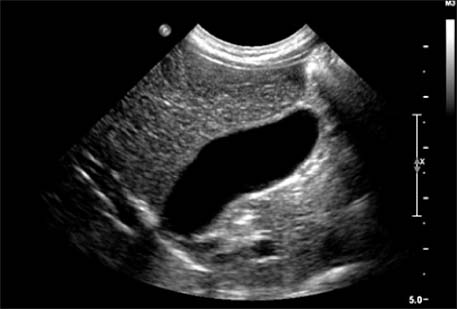J Korean Assoc Pediatr Surg.
2014 Dec;20(2):62-64. 10.13029/jkaps.2014.20.2.62.
Biliary Pseudolithiasis in Children: To Avoid Unnecessary Surgical Procedure
- Affiliations
-
- 1Division of Pediatric Surgery, Department of Surgery, The Catholic University of Korea, Seoul St. Mary's Hospital, Seoul, Korea. myungdlee@gmail.com
- 2Department of Diagnostic Radiology, The Catholic University of Korea, Seoul St. Mary's Hospital, Seoul, Korea.
- KMID: 1961489
- DOI: http://doi.org/10.13029/jkaps.2014.20.2.62
Abstract
- Gallbladder stones in children are not common without underlying hemolytic diseases or other risk factors like obesity. Ceftriaxone, a third generation cephalosporin, is known to make biliary precipitations that can be mistaken for biliary stones. We here report two children with biliary pseudolithiasis with different treatment modalities. One child was mistaken for symptomatic gallbladder stones and underwent elective laparoscopic cholecystectomy, while the other child, after thorough history taking on the ceftriaxone medication, was suspected of biliary pseudolithiasis and was treated conservatively. Both children had the history of usage of ceftriaxone in previous hospitals for infectious diseases. The ceftriaxone history of the first child was missed before the surgery. When gallbladder stones are found in children without any underlying diseases, specific history taking of the usage of ceftriaxone seems to be absolutely required. In this case, immediate interruption of the antibiotic could resolve the episode and avoid unnecessary surgical procedure.
Keyword
MeSH Terms
Figure
Reference
-
1. Miltenburg DM, Schaffer R 3rd, Breslin T, Brandt ML. Changing indications for pediatric cholecystectomy. Pediatrics. 2000; 105:1250–1253.2. Walker SK, Maki AC, Cannon RM, Foley DS, Wilson KM, Galganski LA, et al. Etiology and incidence of pediatric gallbladder disease. Surgery. 2013; 154:927–931.3. Mehta S, Lopez ME, Chumpitazi BP, Mazziotti MV, Brandt ML, Fishman DS. Clinical characteristics and risk factors for symptomatic pediatric gallbladder disease. Pediatrics. 2012; 129:e82–e88.4. Richards DM, Heel RC, Brogden RN, Speight TM, Avery GS. Ceftriaxone. A review of its antibacterial activity, pharmacological properties and therapeutic use. Drugs. 1984; 27:469–527.5. Schaad UB, Wedgwood-Krucko J, Tschaeppeler H. Reversible ceftriaxone-associated biliary pseudolithiasis in children. Lancet. 1988; 2:1411–1413.6. Schaad UB, Tschäppeler H, Lentze MJ. Transient formation of precipitations in the gallbladder associated with ceftriaxone therapy. Pediatr Infect Dis. 1986; 5:708–710.7. Shiffman ML, Keith FB, Moore EW. Pathogenesis of ceftriaxone-associated biliary sludge. In vitro studies of calcium-ceftriaxone binding and solubility. Gastroenterology. 1990; 99:1772–1778.8. Palanduz A, Yalcin I, Tonguç E, Güler N, Oneş U, Salman N, et al. Sonographic assessment of ceftriaxone-associated biliary pseudolithiasis in children. J Clin Ultrasound. 2000; 28:166–168.9. Biner B, Oner N, Celtik C, Bostancioğlu M, Tunçbilek N, Güzel A, et al. Ceftriaxone-associated biliary pseudolithiasis in children. J Clin Ultrasound. 2006; 34:217–222.
- Full Text Links
- Actions
-
Cited
- CITED
-
- Close
- Share
- Similar articles
-
- Clinical Review and Case Report of Ceftriaxone-associated Gallbladder Pseudolithiasis in Adult
- Ceftriaxone-Associated Biliary Pseuodolithiasis: Sonographic and CT Findings
- A Case of Reversible Biliary Pseudolithiasis After Ceftriaxone Therapy
- A Prospective Study on Ceftriaxone-associated Biliary Pseudolithiasis: A Dose-related Comparison
- Ceftriaxone Associated Biliary Pseudolithiasis




